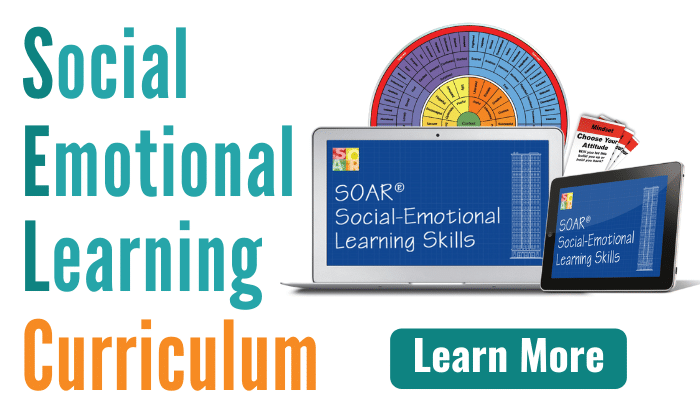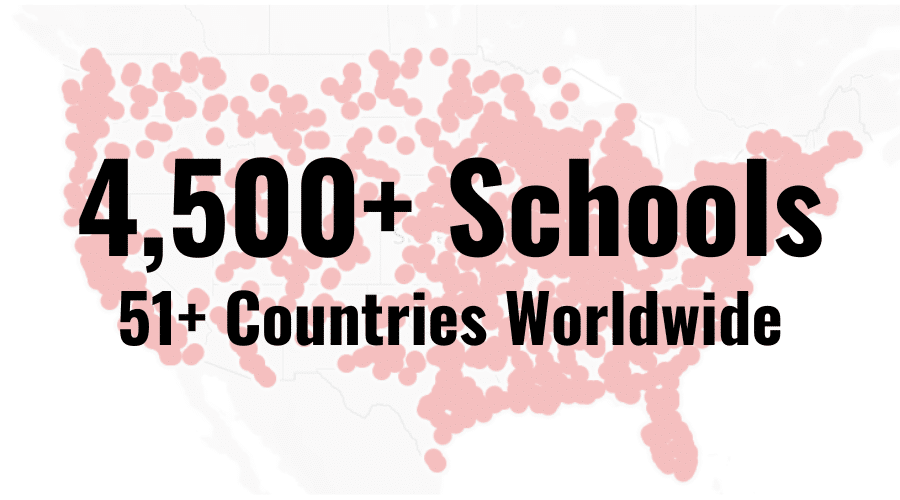Social Emotional Learning Curriculum: How to Get Students in the “Green Zone”
It’s second hour in Mr. K’s class. The bell has just rung. Mr. K is ready to get started with his lesson.
But, here’s what Mr. K doesn’t know is lurking under the surface:

Eric thinks he failed his history quiz this morning, despite studying all night. How can Mr. K possibly get Eric engaged in his class this afternoon?
- Susie was just dumped by her boyfriend because of an untrue rumor posted on social media last night.
- Jimmy’s coach stopped him in the hallway and reminded him of the big game tonight, heaping on the pressure!
- Eric has butterflies in his stomach because he’s mustering the courage to ask Sarah to the homecoming dance.
- Kayla thinks she failed her history quiz this morning, despite studying all night.
“So, who’s ready to learn about continuously compounding interest, today? What does it mean if interest is compounding continuously? Susie? Eric? Anybody?”
Mr. K wonders why much of his class seems to be on a different planet.
These are very heavy situations for students. How can students focus on “continuously compounding interest” with the flip of a switch? The answer is… they can’t.
How to Get Students in the Green Zone
(Watch my video above, or read the corresponding article, below.)
Here’s how I combat the problem and inspire student motivation. (You won’t find this in any teacher’s textbook.)
Rather than jumping into the curriculum, I start with neutral ground. I begin each day with a teacher-lead activity that takes 2-5 minutes of class time. The activity is high interest, unrelated to the curriculum, but is also predictable. Here’s my weekly schedule:
- Monday: My Crazy Weekend. I share an amusing, but personal story of my weekend…students love to hear about the “real life” of their teacher!
- Tuesday: Tuesday’s Two Minute Mysteries. I read a mystery from Donald J. Sobol’s book, Two Minute Mysteries…the students love to play “detective” and try to solve the mystery before I reveal the answer.
- Wednesday: ‘Would You Rather Wednesday’s?’ I read scenarios on a card from the old board game, Would You Rather…? For example, I might ask the class “Would you rather have five bottles stuck on the fingers of one hand for a year or have a bucket stuck on your foot for a year?” This always stirs up fun debate.
- Thursday: Puzzle Thursday. I read a riddle or display a visual puzzle for the class to solve; this is challenging, but engaging.
- Friday: Bad Joke Friday. I share a truly bad joke such as:
Q: When is a door, not a door?
A: When it’s a-jar?
The students typically roll their eyes and groan. BUT, at the end of the semester, I often hear this was their favorite activity!
What do I accomplish with these activities? Some would argue I’ve wasted valuable time in a setting where every minute counts. I would disagree. In those 2-5 minutes, I’ve cleared the “inner-head trash” of 34 teenagers.
I’ve helped reset their brains to a neutral state. Now, they’re better equipped to learn about “continuously compounding interest.”
Susie’s grinning and shaking her head at my bad joke. Jimmy’s imagining what it would be like to have five bottles on his fingers instead of whether or not he’ll make the winning play. Sarah solved the Two Minute Mystery and is confident that Jimmy was impressed. Eric correctly answered a very challenging riddle and feels a little smarter.
I’m not suggesting that these activities will create world peace, but they do:
- Capture the attention of the entire class.
- Put a smile on everyone’s face.
- Create a bond between the teacher and the students. And,
- Make for a smoother transition to the “real” curriculum.
Now when I ask, “What does it mean if interest is compounding continuously?” I might get an answer like, “The compounding doesn’t stop?” This might be the right answer or might be the wrong answer, but at least it is an answer. It then gives me a starting point to engage the students with the curriculum.
But Wait! There’s More…
It wasn’t until I had been using this strategy for several years that I discovered some unintended benefits. Over the years, I’ve kept in touch with a lot of graduates. They often tell me what those 2-5 minutes meant to them. My students have shared the following:
- They thought I was doing it for the sole purpose of entertainment. They thought it was cool that I cared about them to do something to brighten the mood of the class.
- They liked having something to looked forward to at the beginning of every class.
- One student said, “Walking into class, I found myself thinking… I wonder what kind of ridiculous joke he has today?” (In this case, I was thrilled to hear that their attention was already focused on anticipating my actions before they even entered my door.)
- They were disappointed if I had a substitute teacher!
- Students perceived that I “cared” about them more than other teachers because of the “connection” that was made through mutual laughter and debate.
Getting Started
It’s really easy to get started! This is such a simple strategy, you might be surprised by how effective it can be.
There is so much material available; the possibilities are endless. However, I have listed a few links below to help you get started. Choose things that appeal to you, allowing your delivery to be most natural.
- Reader’s Digest (www.rd.com) – particularly the “True Stories” or “Jokes”
- www.5minutemystery.com
- www.history.com/this-day-in-history
- Cards from board games, like: Trivial Pursuit, Would You Rather, Cranium, Balderdash, Truth or Myth, etc.
Good luck, and most of all…have fun!
If you’re an educator looking to teach your students emotional intelligence skills, sign up for our “How Do I Feel?” Curriculum Kit in the blue box on the right of this page.
-Brian
"How Do I Feel?"
Curriculum Kit
Get It FREE!
Includes the SOAR Feelings Wheel, Coping Cards, Full Lesson,
& Information on...

Delivering Student Skills in
Self-Awareness, Self-Management,
Social Awareness, & Responsibility
SOAR® in the News
The SOAR® Curriculum
The most critical learning, organizing, and communication skills needed for school. Learn more here.
Who’s Using SOAR®?




